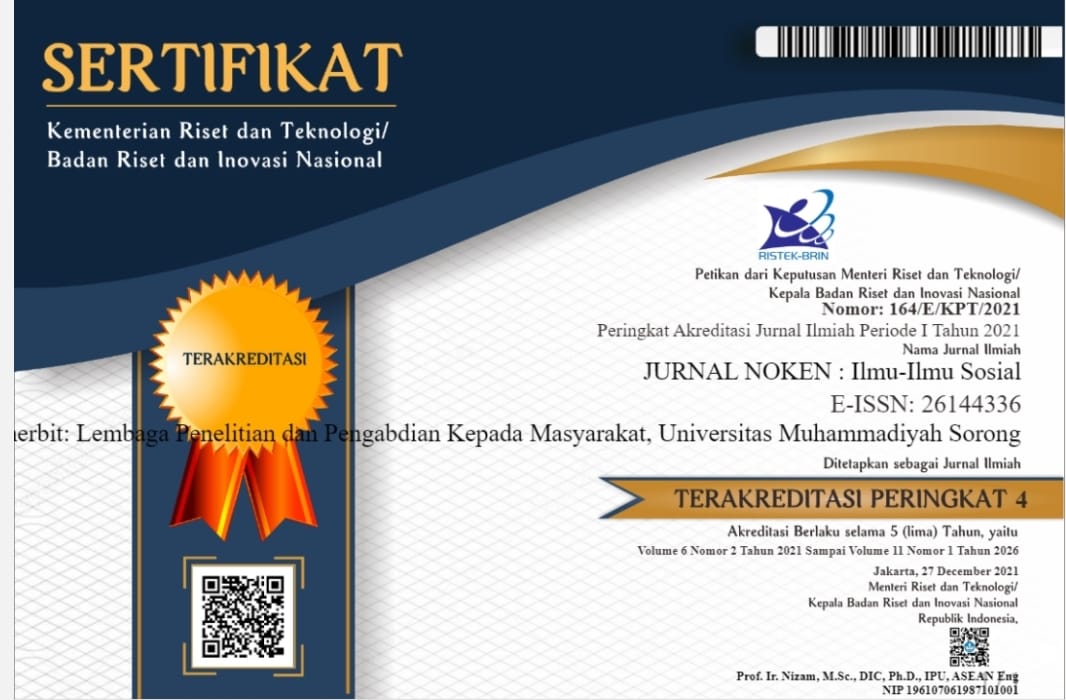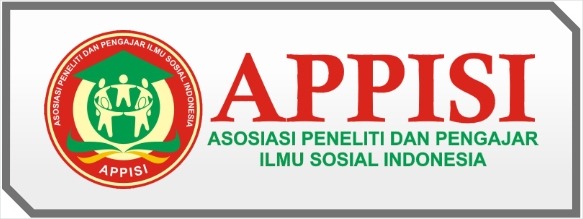Eksistensi Radikalisme Jamaah Ansharut Daulah Kota Bima, Indonesia
DOI:
https://doi.org/10.33506/jn.v9i1.2915Keywords:
Radikalisme, Agama, Kekuasaan, Perjuangan, Konstruksi SosialAbstract
This research aims to find out how radicalism develops and influences members of the JAD, Bima group and how the concept of amaliyah is implemented by group members using Berger and Luckmaan's social construction theory which is described through the process of internalization, objectivation, and externalization. This research is qualitative with a case study approach, semi-structured interviews were conducted with informants selected using a purposive sampling technique. The research shows that the JAD group becomes radicalized when there is an incomplete understanding of the teachings of Islam, they are taught a book that discusses the law of blood against those who oppose or fall into the group of infidels entitled Ahkamuddimah. The JAD group has the concept of iddat or war preparation which begins with the process of teaching Islamic values and is followed by training to strengthen mentally and physically. The concept of amaliyah is recognized as jihad or a struggle to defend religion in order to invent a state life based on Islam. The internalization process is interpreted as a value-teaching activity. At the same time, objectivation is a process where members strengthen their position as part of the group by learning religious values and training consistently. The externalization process is interpreted as the implementation of values and awareness of realizing religious teachings in real actions known as jihad through extreme actions. As a result of the JAD group, Bima contributed to shaping the negative public perception of Islam.
References
Berger, Peter L. & Thomas Luckmann 1990. Tafsir Sosial atas Kenyataan: Risalah tentang Sosiologi Pengetahuan (diterjemahkan dari buku asli The Social Construction of Reality oleh Hasan Basari). Jakarta: LP3ES.
Berger, Peter L. dan Thomas Luckmann (1991). The Social Construction of Reality: A Treatise in the Sociology of Knowledge. London: Penguin Books.
Etikan, Ilker, Sulaiman Abubakar Musa, Rukayya Sunusi Alkassim. Comparison of Convenience Sampling and Purposive Sampling. American Journal of Theoretical and Applied Statistics. Vol. 5, No. 1, 2016, pp. 1-4. doi: 10.11648/j.ajtas.20160501.11.
Fahmi, I., Nasution, A., Miswari, I. L., Langsa, I., Daulay, M., Sumatera, U., Wildan, U. T., Syafieh, I. L., Mufid, A., Tinggi, S., Islam, A., & Blora, K. U. (2021). The Spread of Radicalism Movements in Indonesia: The State’S Accommodative Political Gradation Post-Reform. Journal of Legal, Ethical and Regulatory Issues, 24(1), 1–16.
Kundnani, A. 2012. Radicalisation: the journey of a concept. Race & Class, 54, 25 - 3.
Manuaba, I.B. Putera (2008). Memahami Teori Konstruksi Sosial. Jurnal Masyarakat, Kebudayaan dan Politik Vol. 21 - No. 3 / 2008-07. Surabaya: Fakultas Ilmu Sosial dan Politik Universitas Airlangga.
Mawikere Christian Stenly Marde, Hura Sudiria. (2022). Mengurai Sosiologi Empiris Berger dan Luckmann sebagai Konstruksi Pengetahuan. Jurnal Tumou Tou, Vol. 9 No 2 (2022): 99-109.
Merriam, S. B., & Associates. (2002). Introduction to qualitative research. In S. B. Merriam (Ed.), Qualitative research in practice: Examples for discussion and analysis (pp. 3- 17). San Francisco, CA: Jossey-Bass.
Miles, M. B., & Huberman, A. M. (1994). Qualitative data analysis: An expanded sourcebook (2nd ed.). Sage Publications, Inc.
Soetomo, Greg. 2016. "Radikalisme di Indonesia: Sejarah Rekonstruksi dan Dekonstruksi." Indo-Islamika, vol. 6 (1), pp. 108-138, doi:10.15408/idi.v6i1.14798.
Sulaiman, A. (2016). MEMAHAMI TEORI KONSTRUKSI SOSIAL PETER L. BERGER. Society, 4(1), 15-22. https://doi.org/10.33019/society.v4i1.32.
Triwahyuni, Dewi. 2012. Pengaruh Ditemukannya jaringan Al-Qaeda di Kawasan Asia Tenggara terhadap Perluasan Kehadiran militer Amerika Serikat di Kawasan Asia Tenggara. Majalah Ilmiah Unikom, Vol. 10, (2). PP 167-178.
Van Bruinessen, M. (2002). Genealogies of Islamic Radicalism in Post-Suharto Indonesia. South East Asia Research, 10(2), 117–154. https://doi.org/10.5367/000000002101297035
Yin, R. K. (2009). Case Study Research: Design and Methods. 4th ed. Thousand Oaks, Calif., Sage Publications.
“Anatomi Jamaah Islamiyah dan Pecahannya” CNN Indonesia di akses: https://www.cnnindonesia.com/nasional/20211215231659-20-734628/anatomi-jamaah-islamiyah-dan-pecahannya. (31 Desember 2021) diakses 15 februari 2023.
Downloads
Published
How to Cite
Issue
Section
License
Copyright (c) 2023 Muhammad Husni, Dewie Aries Tina Pulubuhu, Buchari Mengge

This work is licensed under a Creative Commons Attribution-ShareAlike 4.0 International License.










